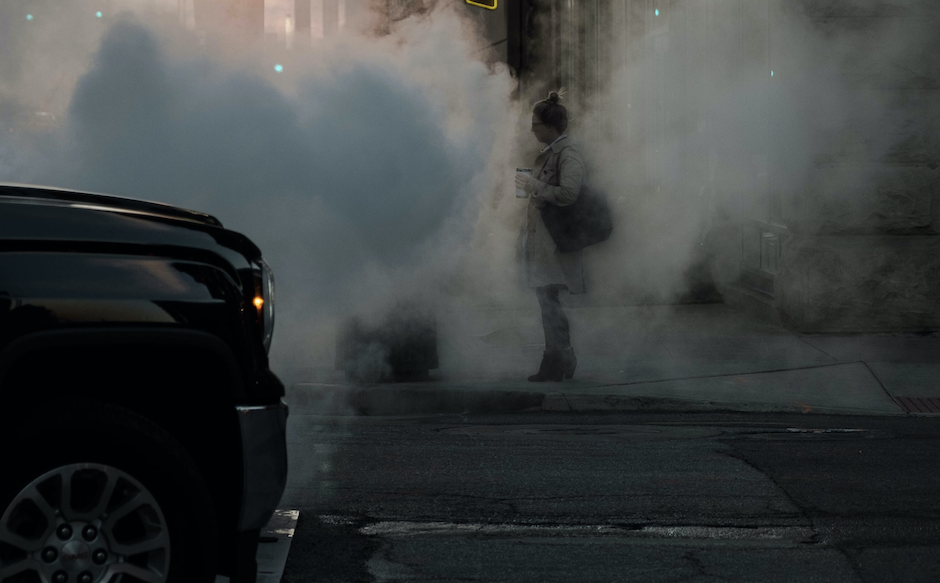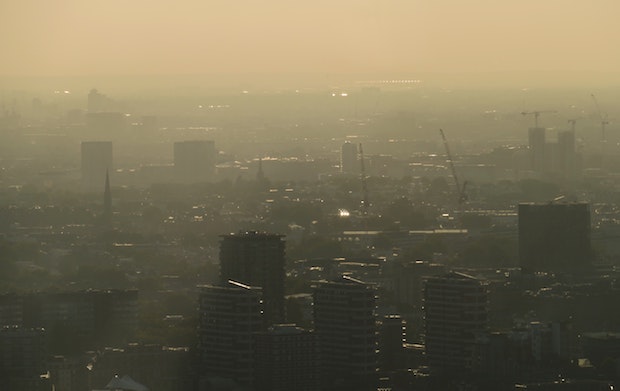Over 400,000 Europeans (still) die due to air pollution every year
The EU speaks of improved air quality, but “with every passing year the difficulty of mitigating the impacts escalates”, experts say. Christian environmentalists are convinced that “churches can play their part”.
MADRID · 11 DECEMBER 2020 · 12:55 CET

According to the latest European Environment Agency (EEA) report on air quality in Europe, “exposure to fine particulate matter caused about 417,000 premature deaths in 41 European countries in 2018. About 379,000 of those deaths occurred in EU-28”.
The report, which collects data from more than 4,000 monitoring stations across Europe, reveals that “54,000 and 19,000 premature deaths were attributed to nitrogen dioxide (NO2) and ground-level ozone (O3), respectively”.
Furthermore, “around 60,000 fewer people died prematurely due to fine particulate matter pollution in 2018, compared with 2009. For nitrogen dioxide, the reduction is even greater as premature deaths have declined by about 54 % over the last decade”.
“It is good news that air quality is improving thanks to the environmental and climate policies that we have been implementing. But we can’t ignore the downside: the number of premature deaths in Europe due to air pollution is still far too high”, said Virginijus Sinkevičius, European Commissioner for Environment, Oceans and Fisheries.
Many experts, however, are not convinced that the evolution reflected in the data can be considered as an “improvement”.
The EEA report focuses on air quality trends as a consequence of reductions in greenhouse gas emissions over the last decade, but it does not consider the effect of accumulated pollution levels over the years.
Only 4 European countries below world average
“Emissions are like the process of filling a bathtub and to stop emitting would be to turn off the tap. When the tap is turned off, the level in the bath does not go down, but it simply stops rising. No reduction in greenhouse gas emissions could reverse the effect of all the pollution that has already occurred. At least in the short term”, explains Antoine Bret, PhD in Physics and professor at the University of Castilla-La Mancha in Spain.
The EEA report points out that more countries exceeded the European Unions's limit value for fine particulate matter in 2018 (Bulgaria, Croatia, Czech Republic, Italy, Poland and Romania) than those with “values even below the World Health Organisation's (WHO) guideline values” (Estonia, Finland, Ireland and Iceland).
With the European Green Deal presented last March, the EU already set the goal of achieving “zero-pollution by 2050”, and in September the European Commission presented a plan to reduce emissions by up to 55% by 2030.
“We need to cut air pollution further and align our air quality standards more closely with the recommendations of the WHO”, Sinkevičius stressed.
This plan is due to be ratified by the member states this December at the last summit of 2020, in the midst of an open debate about how to do this transition. In Eastern Europe, several coutnries are asking for help in converting traditional industrial and energy models.
“It is technically possible to move to net zero emissions”
“There is no deadline for addressing climate change, but with every passing year the difficulty and cost of averting and mitigating the impacts escalates. We don't miss our opportunity to act at all but we might miss opportunities to avert certain impacts”, Jeremy Lindsell, Director of Science and Conservation of Christian environmental organisation A Rocha.
According to Lindsell, “it is technically possible to move to net zero emissions but it needs political will and good leadership”.
Bret adds: “The nuance is that if we were to stop emitting carbon dioxide today, there would be natural phenomena that would gradually lower the level of this gas in the atmosphere. But this would take centuries”.

Public health and climate change
The first report of The Lancet Countdown on the connections between public health and climate change, was published five years ago, coinciding with the Paris Agreement (2015). Since then, its subsequent editions have highlighted the worsening of health in relation to the process of global warming.
According to the publication, which has the participation of 120 international scientists, there has been a 53.7% increase in heat-related mortality among people over 65 over the last twenty years.
The relationship between global warming and air pollution is another issue that does not appear in the EEA report on air quality, despite the relationship between the two. The pandemic is mentioned in the European agency's study.
Although the EEA “does not yet have estimates on the potential positive health impacts of the cleaner air during 2020”, it stresses that “provisional EEA data by the Copernicus Atmosphere Monitoring Service (CAMS), confirms up to 60 % reductions of certain air pollutants in countries where lockdown measures were implemented in the spring of 2020”.
Professor Brets is not so positive. “Even if total carbon dioxide emissions were to fall by 20% by 2019, this would hardly be noticeable on the curve of increasing carbon dioxide in the atmosphere. It's like having a tap running at maximum for 200 years and then suddenly turning it off a little, not completely, for a year. Part of the pollution may have been drastically reduced, but we can't expect much change in terms of carbon dioxide levels”, he says.
Hans Bruyninckx, EEA Executive Director, still believes that “the EEA’s data prove that investing in better air quality is an investment for better health and productivity for all Europeans”,
“Churches can play their part in the climate challenge”
Environmentalist Jeremy Lindsell believes that “there is no doubt that we bring enormous problems on ourselves by our poor stewardship of creation (air pollution being one example) and we recognise that enlightened self-interest is a powerful argument to change our behaviour, but we don't necessarily see ourselves as the main victims”.
The A Rocha Director of Science and Conservation, explains that his organisation works knowing “that all that God has made is valued by Him and should therefore be valued by us. We are caring for creation in its own right and in obedience to God, not only because it serves us well to do so”.
The organisation advocates for a model that combines community training and environmental awareness so that churches “can play their part in providing good leadership in the face of the climate challenge”.
Church programmes like EcoChurch in the UK and Eglise Verte in France, “help congregations to audit their corporate life together and see how they can lessen their wasteful impact on the earth”, Lindsell explains.
“This might relate to their lands and buildings, their lifestyles, how they run their events and where they support missions as much as what they teach”, he adds, recalling that “earlier this year the Church of England committed itself to reach net zero by 2030”.
“We would encourage all Christians to engage with the world around them. The Bible repeatedly invites us to consider God's creation in order to grow in our understanding of him. This must surely lead us to question how we are treating it”, Lindsell concludes.
Published in: Evangelical Focus - science - Over 400,000 Europeans (still) die due to air pollution every year
